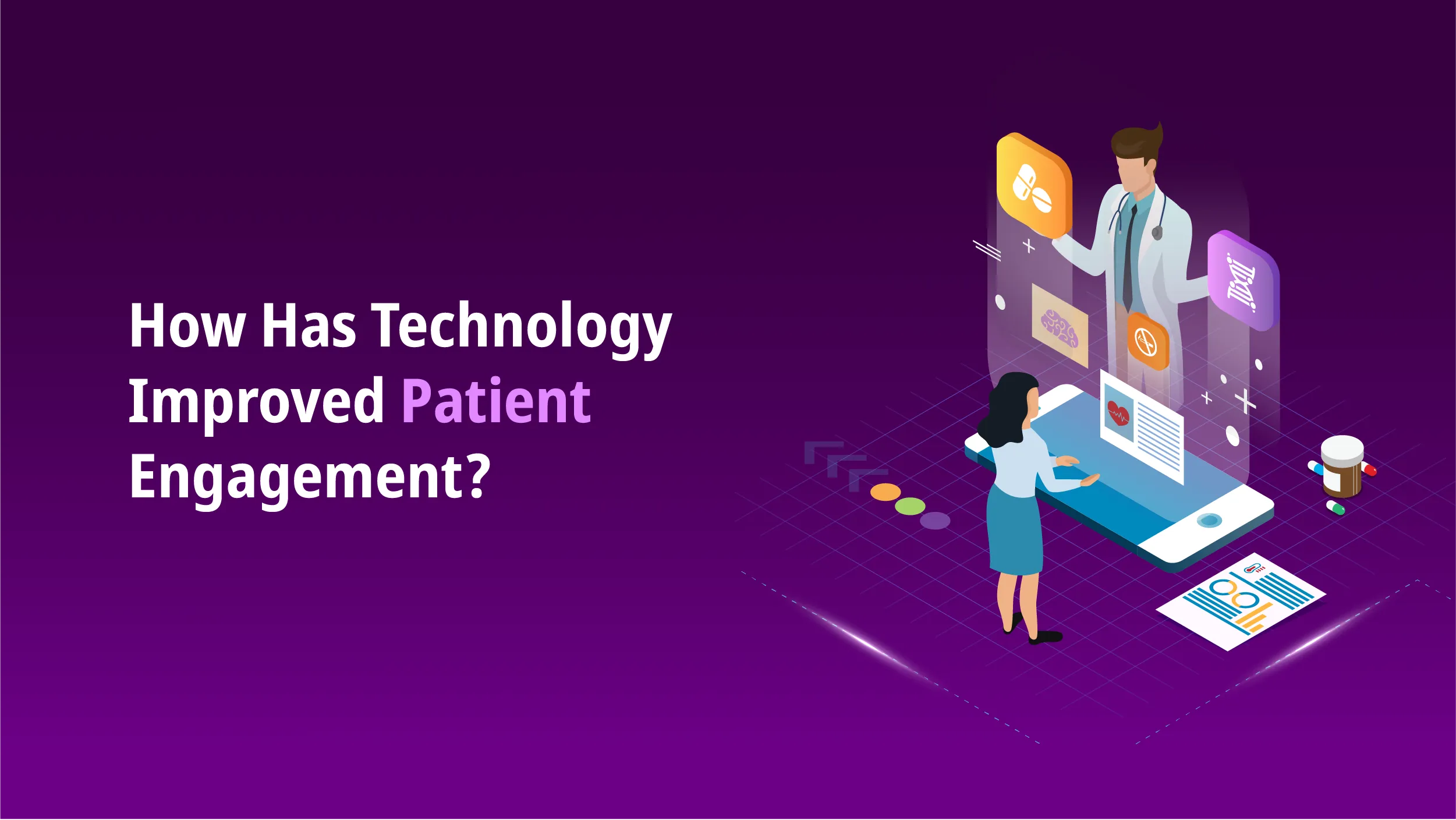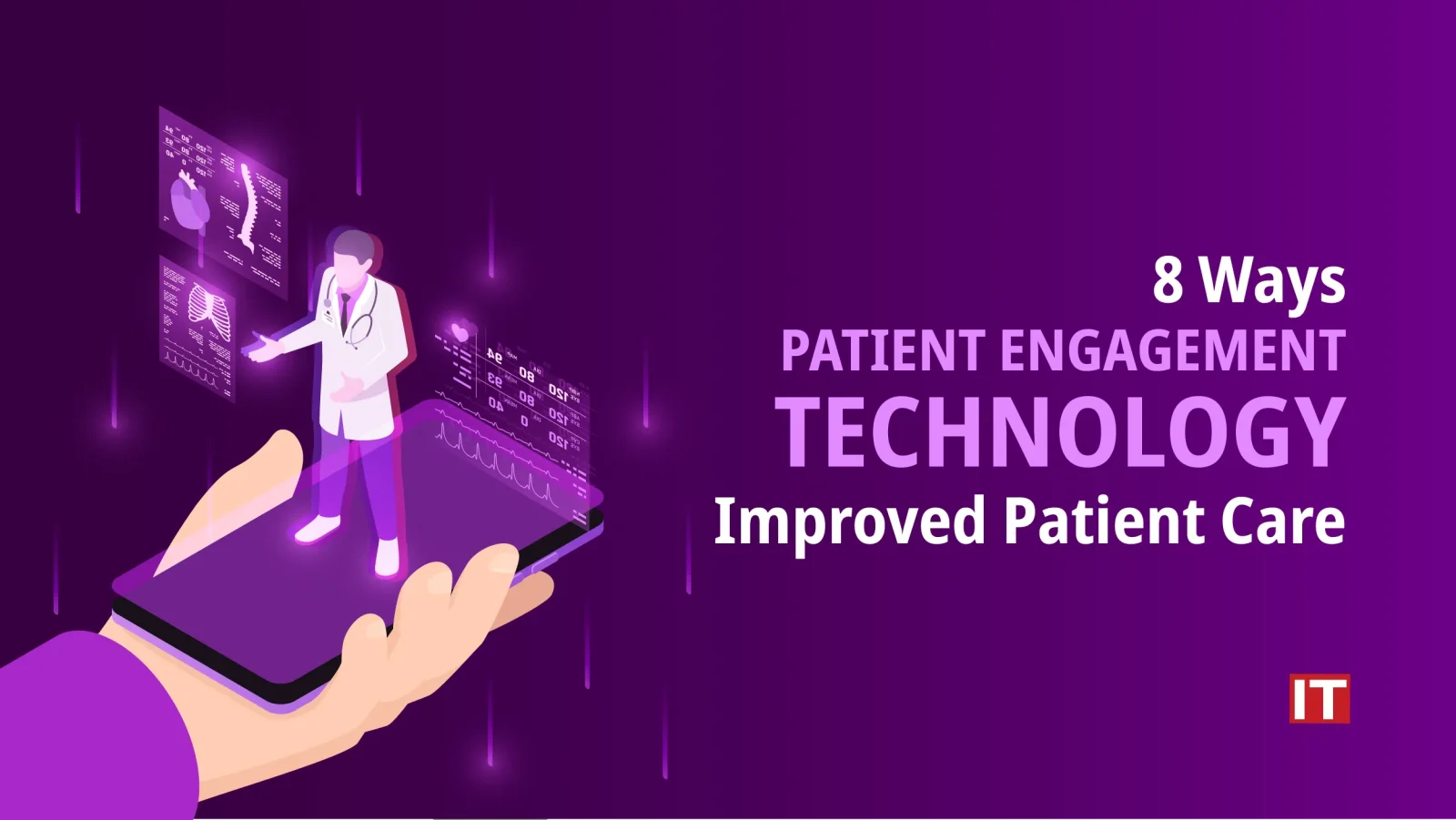In recent years, patient engagement technology has advanced significantly, transforming traditional patient education and entertainment systems into sophisticated engagement tools. These modern systems now feature a diverse array of media, including digital whiteboards and interactive TVs, designed to enhance the overall patient experience.
Even though this technological advancement has propelled the quality of patient care to triple, it comes with its own challenges as well. One such challenge is the incompatibility of electronic health records (EHRs) with these new technologies, leading to potential integration challenges and increased costs. This blog sheds light on the positive side of patient engagement technologies.
What is Patient Engagement Technology?
Patient engagement technology describes a variety of online resources and applications intended to improve communication between patients and healthcare professionals. By enabling patients to actively participate in their healthcare journey, these technologies aim to improve patient happiness and health outcomes.
How Has Technology Improved Patient Engagement?
 Technology has significantly enhanced patient engagement through various innovative approaches that transform how patients interact with their healthcare providers and manage their health.
Technology has significantly enhanced patient engagement through various innovative approaches that transform how patients interact with their healthcare providers and manage their health.
1. Personalized Communication
Digital health technologies have enabled more personalized communication between patients and healthcare providers. Through patient portals and mobile apps, individuals can access tailored health information, receive customized reminders for medications and appointments, and engage in two-way communication with their care teams.
This personalized interaction helps in building a stronger patient-provider relationship and ensures that patients are more informed and involved in their care.
Also Read: What Is Healthcare Data Analytics? Benefits & Challenges
2. Real-Time Health Monitoring
Remote monitoring tools, IoT-enabled devices, etc have revolutionized patient engagement by allowing real-time tracking of health metrics such as heart rate, blood glucose levels, and physical activity.
These technologies empower patients to monitor their health conditions more closely and make data-driven decisions about their lifestyle and treatment plans. By providing immediate feedback, patients are more likely to adhere to recommended health practices and treatments.
3. Enhanced Access to Health Information
Access to comprehensive health information has improved significantly with the advent of digital health platforms. Patients can now easily access their medical records, test results, and educational resources online.
This transparency ensures that patients are more informed about their health status and treatment options, fostering a more proactive approach to managing their health.
4. Interactive Health Management Tools
Interactive tools such as symptom checkers, virtual health assistants, and chatbots offer patients immediate assistance and guidance.
These tools can answer questions, provide health tips, and help patients navigate their care journey more effectively. By offering interactive support, patients feel more empowered and engaged in their healthcare decisions.
5. Telemedicine and Virtual Consultations
Telemedicine has expanded access to healthcare services, allowing patients to consult with healthcare providers remotely. This convenience removes barriers related to travel and time, making it easier for patients to seek medical advice and follow-up care.
Virtual consultations enhance patient engagement by offering more flexible and accessible options for receiving care.
6. Improved Patient Education
Technology has enhanced patient education through interactive and multimedia resources. Online educational platforms, videos, and webinars provide patients with engaging content that helps them understand their health conditions and treatments better.
This increased understanding promotes active participation in their health management.
7. Patient Feedback and Involvement
Digital tools now enable patients to provide feedback on their care experiences through surveys and online reviews. This feedback loop allows healthcare providers to make improvements based on patient input and fosters a sense of involvement and collaboration.
By actively participating in the feedback process, patients feel more valued and engaged in their care.
8. Wearable Devices
Wearable technology is important for diagnosis, therapy support, and health monitoring. According to Statista research, there will be over 740 million smartwatch users by 2029. Looking back, it was noted in 2015 that 60 to 80 times a day, Apple Watch owners were glancing at their wrists. Since these gadgets are always with their users, adding them to your client interaction chain might greatly improve patient service and increase engagement, which would enable you to communicate with your patients more often.
One well-known example is the watches made by Cala Health, which are intended to alleviate tremors brought on by specific illnesses. According to a 2020 study, after utilizing Cala’s device, over 93% of users reported at least a 50% decrease in tremor strength.
5 Practical Steps for Implementing Better Patient Engagement
 After exploring the numerous ways technology can enhance patient engagement, it’s time to apply these insights to your practice. To effectively integrate technology and maximize its benefits, consider these essential steps:
After exploring the numerous ways technology can enhance patient engagement, it’s time to apply these insights to your practice. To effectively integrate technology and maximize its benefits, consider these essential steps:
1. Set SMART Goals
Begin by establishing SMART goals—specific, measurable, achievable, relevant, and time-bound. Outline clear objectives for various aspects of patient engagement, such as boosting appointment adherence or elevating patient satisfaction scores. Setting well-defined goals helps in tracking progress and achieving meaningful improvements.
2. Collect Patient Feedback
Implement tools to gather patient feedback through surveys after each appointment. Utilize platforms like SurveyMonkey to create and send surveys via email or text while the experience is still recent.
Analyzing this feedback will provide insights into patient satisfaction and identify areas needing enhancement, guiding you toward actionable improvements.
3. Provide Regular Training for Your Team
Invest in continuous training for your team to stay updated on the latest best practices in patient engagement. Regular workshops and educational sessions ensure that your staff is well-prepared to effectively use new technologies and engage patients more meaningfully.
4. Consult with Colleagues
Reach out to colleagues who have successfully integrated technology into their practices. Inquire about the tools and technologies they use and their outcomes.
Learning from their experiences can provide valuable insights and help you make informed decisions about what might work best for your practice.
5. Analyze and Compare Patient Engagement Software
Evaluate different patient engagement software options by comparing their features, hosting capabilities, integration possibilities, and pricing.
Since no single solution fits all needs, a detailed comparison will help you select the software that aligns with your practice’s requirements and goals.
Concluding How Patient Engagement Technology Will Look in the Future
In the future, patient engagement technology will seamlessly integrate advanced AI and machine learning capabilities, providing personalized health insights and proactive care recommendations tailored to individual needs. Wearable devices and mobile applications will become more sophisticated, enabling real-time monitoring of vital signs and automatic alerts for both patients and providers, fostering a more responsive healthcare environment. Virtual reality and augmented reality will enhance patient education and therapeutic experiences, making complex medical information more accessible and engaging.
































